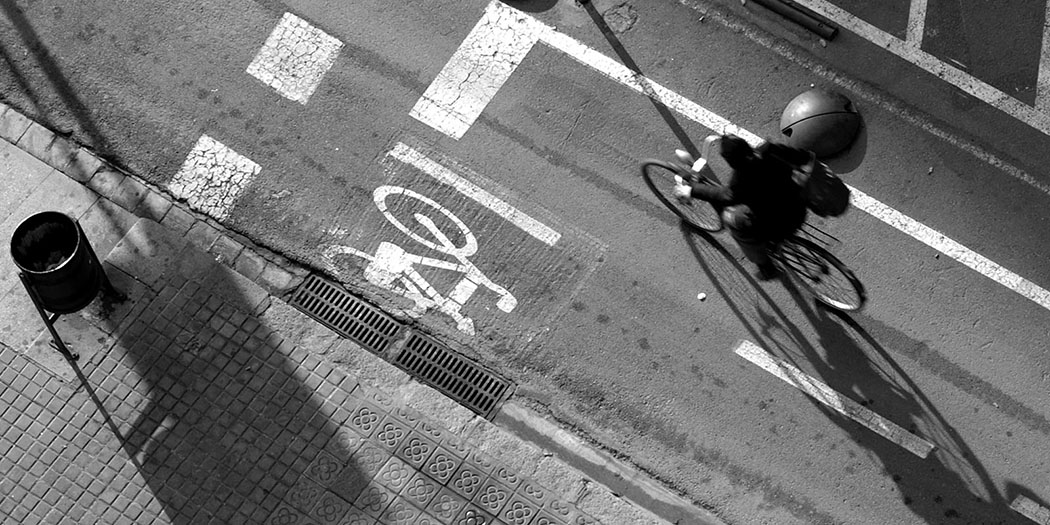Any new city legislation should include planning indicators that improve health.
Cities are hubs of innovation and wealth creation, but they are also hotspots for air pollution, noise, heat island effects and a lack of green space, all of which are detrimental to human health and wellbeing. One of the greatest challenges facing cities is (suboptimal) urban and transport planning, as well as the use of public space, given that the streets in many cities are dominated by cars. For instance, a city like Barcelona has some of the highest traffic density and air pollution and noise levels in Europe, which are responsible for an estimated 3,000 premature deaths per year. 60% of public space is taken up by cars, even though just one in four trips are by car: as such, the public space could be used in a healthier way.
During the COVID-19 pandemic, cities have started to push out cars, increase space for active transportation and expand their cycling lanes and rates. During the lockdowns, around 90% of car drivers did not miss their commute at all (or at least some aspects of it), while around 90% of cyclists did miss commuting a lot, or in part. And air pollution and noise levels dropped considerably, at times up to 60%.
Therefore, is it time to rethink our urban models? In the 20th century, cities appeared to be designed for cars, but in the 21st century, should we aim for cities designed for people? Should we now aspire to cities that are smart, sustainable, liveable, equitable and healthy, cities that apply nature-based solutions, have a circular economy and promote active mobility and green space?
New Urban Models
A number of new urban concepts are being introduced in various cities. These concepts go some way to address the current pressing issues, with proposals such as superblocks, the 15-minute city, the car-free city, or a mixture thereof. What are some of the likely impacts?
Superblocks
Over 500 superblocks are being planned in Barcelona. The idea is to reduce motorised traffic in some streets of a block, and thus provide more space for people, active travel and green space. They will lower air pollution and noise levels, reduce heat island effects and increase green space and physical activity: as such, they could prevent nearly 700 premature deaths each year in Barcelona. Similar principles are being applied in certain low-traffic neighbourhoods in the United Kingdom.
The 15-minute city
Paris is introducing the 15-minute city, where work, school, entertainment and other activities are reachable within a 15-minute walk from the home. The 15-minute city will require a fairly radical rethink of our urban spaces, including a mixing-up of different population groups, rather than the current zoning by socioeconomic status. In turn, this is likely to reduce inequalities, and will also slash the need for long-distance travel and thereby cut CO2 emissions, as well as air pollution and noise levels.
The car-free city
Hamburg plans to be car-free by 2034, partly as a way of tackling the climate crisis. Car-free cities reduce unnecessary private motorised traffic, and provide easy access to active and public transportation. They reduce air pollution and noise levels, increase physical activity and allow for more green space. A successful example is Vauban in Freiburg, Germany, which is a neighbourhood without cars and with sustainable housing.
Common Principles
What these new urban models have in common is how they invert the usual transport planning pyramid: cars, invariably prioritised at the top of the pyramid, are supplanted by public transportation, walking and cycling.
Increasing the cycling network (and thereby cycling rates) is a way of reducing motorised traffic and CO2 emissions, and thus increase active mobility. This rise in physical activity will also positively affect people’s health and wellbeing, allowing them to assimilate exercise into their day-to-day lives (i.e. by means of their daily commutes), since they often do not have enough time to go to the gym. Great progress has been made in creating and expanding bike lanes, but they only work if they are safe, and form part of a network.
These new urban models all offer, to some extent, further access to green space. This is crucial for many reasons, including better mental health and wellbeing, and a rise in cognitive functioning and life expectancy. There is not only a need for new parks, but also more vegetation in the streets. We need to dig up tarmac and plant more trees, which will reduce heat island effects and contribute to CO2 sequestration, as well as improving health and wellbeing.
Systemic and Holistic Approaches, Policies and Investments
Cities are complex systems. In order to address their challenges, we need systemic and holistic approaches that take into account many different factors and feedback loops, with a focus on sustainability (i.e. the climate crisis), liveability, health and equity, all at the same time. Too often, cities just have silos in different sectors, which stops the implementation of approaches that seek to deal with multiple challenges. We need approaches that involve multiple stakeholders and disciplines.
One of the great challenges that many cities are undergoing is outdated legislation, such as zoning laws: this prevents mixed land use, which is essential for active mobility, and vital for health and interesting public spaces. Any new legislation, including for new urban developments, should include planning indicators that improve health, yet this is often not the case.
Furthermore, health impact assessments should be used to work out which are the healthiest planning scenarios.
Recently, the World Health Organisation (WHO) published a manifesto for a healthy recovery from COVID-19, which includes building cities that are healthy and liveable. These ideas need support and investment. The European Green Deal may well be an opportunity: it is a comprehensive roadmap, striving to make the European Union more resource-efficient and sustainable. As such, it is a great opportunity to make cities carbon neutral, as well as healthier and more liveable for all, by means of better urban and transport planning.
Let us take this opportunity to make our cities and their public spaces better.




